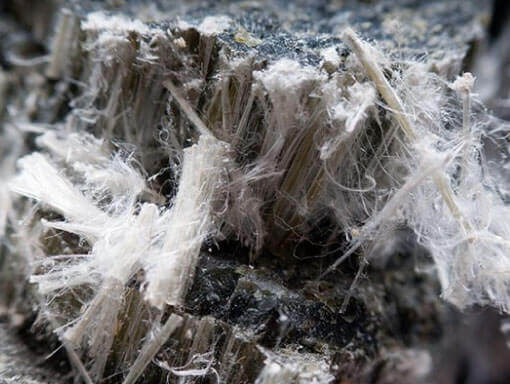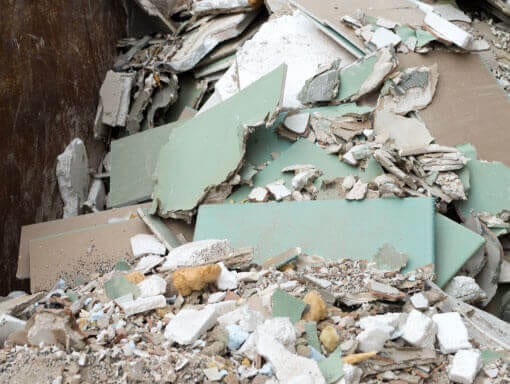Asbestos the Miracle Product?
Asbestos is a naturally occurring fibrous mineral that became a popular additive within construction products due to its physical properties that were seemingly tailored to the construction industry’s needs. Among these properties are its insulating capabilities, sound absorption, fiber tensile strength, and affordability.
These properties made asbestos a prominent additive within building insulation materials, wallboards, siding and roofing, ceiling and floor tiles, texture paint, and thousands of other construction materials.
It was not until the 1970s that the detrimental health effects surrounding the inhalation of asbestos fibers became apparent and the use of asbestos within manufactured products began to be banned.
Asbestos typically does not pose a problem within a home’s building materials until demolition or renovation activities occur which allow the material to become airborne and inhaled by those around the demolition.
Asbestos, in general, should be tested for and abated if found during demolition and renovation of homes that were built between 1930 and 1980, as these homes may have asbestos insulation, asbestos textured paint, and asbestos-laden millboard or cement board. Homes built between 1930 and 1980 may also very well contain drywall that contains asbestos fibers.
This is particularly a concern due to the common occurrence of drywall repair and sanding required within old homes during renovation activities. Drywall materials, including drywall mud, contained asbestos to assist in binding the core material and also provided a more sound absorbent and fire resistant wall cover.
National Gypsum Company, one of the largest drywall suppliers of the time used asbestos within its wallboards, cement board, joint compound, plaster, and exterior stucco materials as well as many other materials it manufactured.


Asbestos is especially common in textured drywall surfaces found in old homes. This is often a renovation nightmare when it comes to the highly undesirable popcorn ceiling. Most all homeowners that inherent a popcorn ceiling wish to eliminate it immediately.
It is important to note that the popcorn texture was popular right in the middle of the timeline of heavy asbestos use in residential building materials.
Many do-it-yourself homeowners will jump right into a popcorn ceiling removal project due to its relative ease, but if your home was built before 1980, you should always test for asbestos before beginning the removal project.
If asbestos is found, a professional abatement contractor will be necessary to perform the texture removal, or you may choose to cover the texture with a new layer of drywall.
There is no method to determining with the naked eye whether your home has asbestos within the drywall, plaster, or joint compound. Asbestos fibers are microscopic and the only means for determining their presence is to take a small sample and send it out for testing.
Asbestos test kits are typically available from your home improvement store and require that you scrape a small sample into a bag and send it to a laboratory for testing. You’ll typically receive results within a week or two.
You may wish to contact a professional abatement contractor to sample your home in various locations and sample from various materials to determine if asbestos materials exist.
It is important to have this knowledge if you live in an old home and have a do-it-yourself home improvement mindset. Asbestos is typically the furthest thing from a do-it-yourselfer’s mind when it comes time to repair drywall damage or remove old insulation.
Having the knowledge at the forefront of a project can save a potentially major health issue in the long run.
There is little cause for concern in newer homes, however, as drywall, as it is commonly and currently known, contains no asbestos-related additives and the prominent drywall supplier, National Gypsum Company stopped using asbestos within its products in 1970.
Asbestos, related products do, in fact, still exist and are still used in some building materials such as roofing materials and vinyl floor tiles; however, their asbestos content is required by law to be less than 1 percent of the product make-up.


